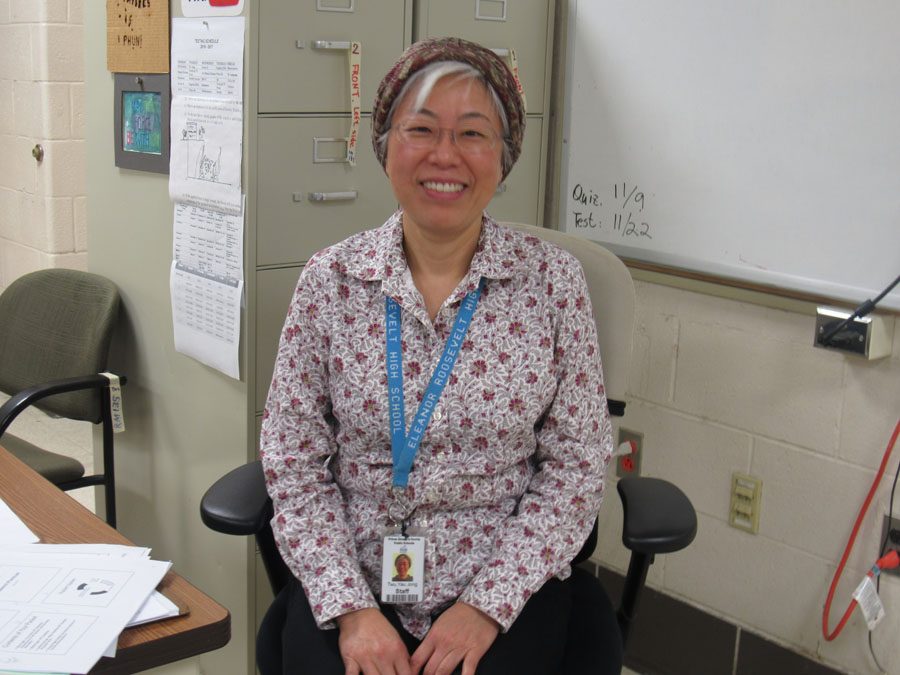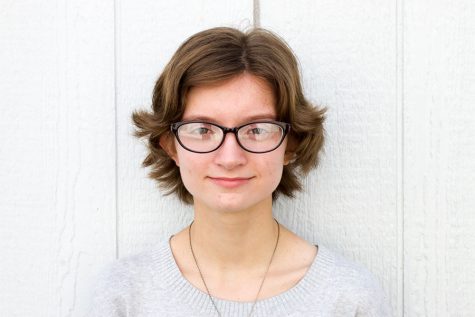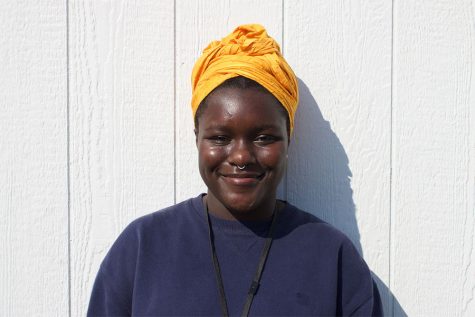Teacher Feature: Ms. Yau-Jong Twu
Eleanor Roosevelt Physics Teacher, Ms. Yau-Jong Twu, sitting comfortably at her desk.
November 29, 2016
“I guess I always liked to help other people understand physics,” said Ms. Yau-Jong Twu as she sat in her classroom, surrounded by cabinets and drawers filled with materials for class demonstrations and labs. “When I was a graduate student. . .I loved being a teaching assistant, because it was like I got to take a break from research to teach, to work with students, and that’s what I really liked.”
Ms. Twu is a physics teacher and the Internship Coordinator for the Science and Technology Program at Eleanor Roosevelt High School, where she has worked since 1999. She has taught algebra-based AP Physics, as well as AP Physics C–which is calculus-based–and Physics S/T. She began working as the Internship Coordinator last spring, and oversees senior interns who work at institutions such as the University of Maryland and NASA while conducting research for their senior projects.
Prior to teaching at ERHS, Ms. Twu attended National Taiwan University, where she worked as a teaching assistant for two years after graduating. She then attended graduate school at the University of Virginia, where she was also a teaching assistant, and then worked as a teaching associate at Cornell University for one year. Nine years later, she began teaching at ERHS, and has stayed there ever since.
“I thought about the things I liked to do before, and I always liked teaching,” she explained.
But why physics in particular? “The physics laws are really simple,” she explained. “I just. . .have to figure out how to apply those very simple laws,” adding with a laugh that there are “not a whole lot of things to memorize” and “a lot of the problems are like puzzles.”
A key part of Ms. Twu’s teaching style is her use of the “flipped classroom” teaching method, in which students view instructional content at home and complete exercises and review the content at school, according to the nonprofit association Educause. Ms. Twu’s lessons take the form of YouTube videos she films and edits herself, including lectures, demonstrations, and practice problems. These are used for her algebra-based AP Physics classes.
“The year before I started making videos, I had a hard of hearing student in my AP Physics B class,” Ms. Twu said when asked about her decision to start making the videos, in May of 2012. “She had really good spirit, and she worked hard, but it was really difficult for her to be watching me, and writing, and then watching the [interpreter].”
She explained that she wanted to make videos so that this student “would have more time to understand,” especially with the use of closed captions. She also wanted the information to be available online for students outside of ERHS to view, noting that it could be valuable for those attending small schools, where science teachers may have to teach multiple subjects. “If there was something online, then everybody could have access to it.”
Dr. Laurent Rigal has also taught multiple levels of physics to ERHS students since joining the school’s faculty in 2012, and said that “there’s no doubt” about the role her videos have played in the success of these classes. “It just gives a different tool to students for their understanding of the topic,” he explained, adding that “the more tools you have, the more likely you are to reach out to the students.” Dr. Rigal and Ms. Twu have worked together since he began teaching at ERHS, collaborating on planning schedules for the year and using the videos as resources for their lessons. Like Ms. Twu, he has always enjoyed teaching, and said that she was “a great help in getting me started” after he started working at the school.
Ms. Twu’s hard work is noted by her students, including both those who have taken her physics classes and those who she oversees as part of the internship program. Senior William Song, who has taken both AP Physics 2 and AP Physics C with her, said, “She’s a good teacher, she gets her point across.” When asked about the use of her videos, he explained that they are “definitely” helpful. “In class we have limited time,” he elaborated. “Videos help to explain the mechanics.”
“You can feel her hard work,” said senior Anna Park, who has taken AP Physics 1 and AP Physics C with Ms. Twu, and is also an intern at the University of Maryland. When asked what she enjoys about having Ms. Twu as a teacher, she laughed and said, “Where to start is the problem here,” going on to describe the dedication that is the hallmark of Ms. Twu’s teaching style. “You really want to do well in her class,” she said. “She always tries to answer everyone’s questions before moving on. . .she doesn’t hesitate to focus on you.”
When she isn’t teaching or working on videos, Ms. Twu said that she likes to garden and listen to audio books, especially at the same time. However, it is nevertheless clear that her true passion is for teaching. “I love my students,” she immediately said, when asked about what she enjoys most about her job. “Because this is the only school I’ve taught in, I don’t know if I’m spoiled or not,” she said with a smile. “But the students here are just so wonderful.”
This article also ran in the November 24, 2016 issue of the Greenbelt News Review.






